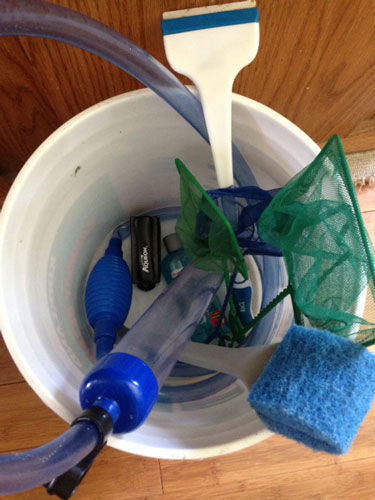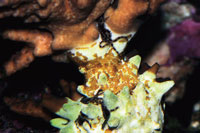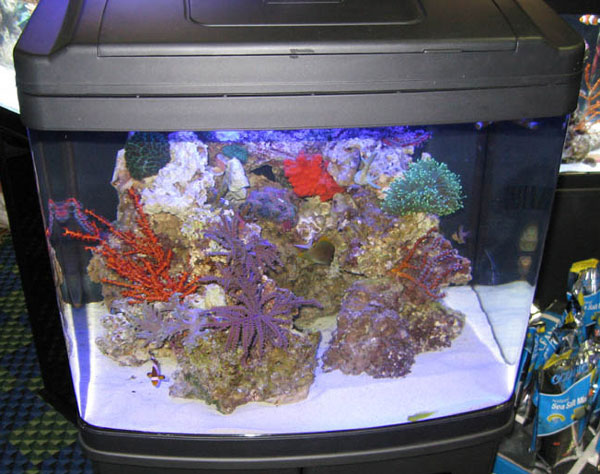
Q. My local fish store (LFS) recommends using an undergravel filter in a freshwater aquarium. When I go to an online forum almost everyone tells me not to use one of these units. Should I use an undergravel filter like my LFS recommends or are they, as one forum user put it: “outdated.”
Sherry Turner
Virginia
A. Undergravel filters were once a great piece of aquarium equipment that many fishkeepers used in their aquariums. In fact, it wasn’t that long ago that undegravel filters were standard in most any aquarium (marine or freshwater). I can remember some of my first freshwater aquariums that used undergravel filters with powerheads to promote good aquarium water quality. These plastic-bottomed units with two plastic tube risers are inexpensive and easy to use, likely one reason they became so popular. The undergravel filter argument is popular on Internet forums because there seems to be a core of aquarists that are still proponents of using them and many new aquarists that are totally against the idea.
Today, using an undergravel filter as your only means of filtration seems like a bad idea. With the technological advances in power filtration it seems out of place to solely rely on an undergravel filter. The theory behind undergravel filters is sound and simple. Undergravel filters employ your aquarium’s gravel as their filter media along with uneaten fish food and fish waste. They provide oxygen to the bacteria living within the gravel via a powerhead or airstone mounted at the top of the supplied plastic tubes. This encourages the bacterial breakdown of wastes.
While I can’t recommend using an undergravel filter as the only filtration for any aquarium, I will say that it is a tried and true method of bacterial filtration. It provides bacteria with the necessary elements it needs to proliferate and thrive. When used in conjunction with power filtration, an undergravel filter could be a decent aquarium keeping tool.
These units do require regular maintenance. One important thing to consider is gravel vacuuming. This process, done with a siphon, will remove excess waste particles from your gravel, freeing up room for oxygenation. This will prevent anaerobiosis, or the creation of areas in the gravel bed where bacteria are not efficiently working to break down wastes. You must be careful not to over vacuum your aquarium gravel and therefore remove so many microbes from the system that it enters biological shock. One recommendation is cleaning only 50 percent of your aquarium’s gravel per cleaning. Using this method you can rotate areas cleaned and not fear that you have removed too much beneficial bacteria from your aquarium.
One instance where an undergravel filter has no place is in either a reef aquarium or freshwater planted aquarium. In either instance the undergravel filter is a hindrance and does not combine well with the other items needed to make those aquariums flourish.
Undergravel filters appear to be little more than plastic plates and tubes and are not nearly as interesting as more modern forms of filtration. The truth is the undergravel filter is a proven piece of aquarium equipment that is inexpensive and easy to implement. Many traditional aquarists who keep freshwater aquariums still use undergravel filters with good success.
To help settle the debate you have experienced online, I’ll say this: Neither the LFS you visited nor the aquarium forum users you spoke with are right or wrong. The undergravel filter can be an effective piece of aquarium equipment. Anything that works efficiently, is inexpensive, and easy to use, is never really “outdated.”
 What to Keep in Your Aquarium Maintenance Bucket
It is too easy for hobbyists, especially new ones, to become
What to Keep in Your Aquarium Maintenance Bucket
It is too easy for hobbyists, especially new ones, to become
 Pufferfish Teeth Care
Because their teeth are constantly growing, pufferfish
Pufferfish Teeth Care
Because their teeth are constantly growing, pufferfish
 Useful Idea For Stronger Nutrition And Wellness
It truly does show when you take time to create a proper no
Useful Idea For Stronger Nutrition And Wellness
It truly does show when you take time to create a proper no
 Coral and Invertebrate Quarantine Procedures
Coral and Invertebrate Quarantine Procedures
 Marine Nano Tank Problems
Marine Nano Tank Problems
Copyright © 2005-2016 Pet Information All Rights Reserved
Contact us: www162date@outlook.com